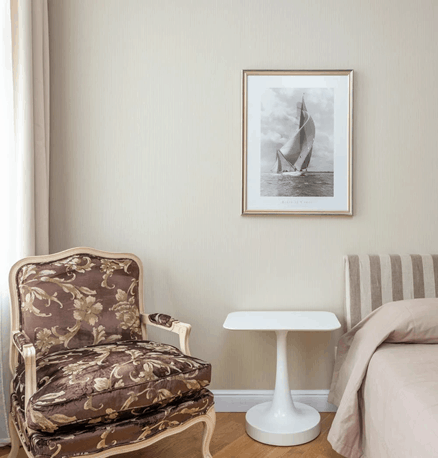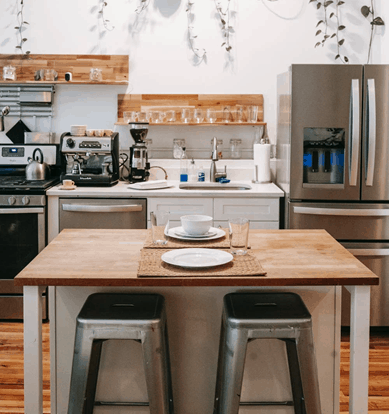
Plywood is one of the top-selling building materials in India. Though there are different categories under which plywood can be categorised, the most widely accepted classification of plywood is according to its water resistance capacity.
According to the Indian grading system, plywood is classified under 3 categories: moisture resistant/water resistant or MR Grade; boiling water-resistant or BWR Grade plywood; and boiling water-proof grade or BWP Grade plywood.
In this blog, we will delve deeper into the details of MR grade and BWP grade plywood offered by CenturyPly and compare their features in order to determine which plywood suits your needs perfectly.

At CenturyPly, we have a wide range of BWP, BWR, and MR grade plywood across all budgets so that you can choose the plywood that fits your price range and your requirements. So, let us explore the differences between these three CenturyPly products.
| PARAMETER | MOISTURE RESISTANT PLYWOOD | BWR Plywood | BOILING WATERPROOF PLYWOOD |
| Water Resistance | Moisture Resistant plywood, as the name suggests, can resist normal levels of water and moisture but is not waterproof. It is a weather-resistant and water-resistant plywood and can be safely used in locations that experience high levels of moisture and humidity.
| BWR Plywood is highly resistant to water but is not designed to withstand long exposure to boiling water, unlike BWP, which is impervious to water absorption even under continuous boiling conditions. | Boiling Waterproof plywood has the highest resistance to water and is considered to be completely waterproof. BWP plywood can withstand the vagaries of weather and can be exposed to fluctuating weather conditions without the fear of delamination. |
| IS Certification | The Bureau of Indian Standards has given the IS:303 specification number to MR grade plywood. | The Bureau of Indian Standards has given the IS:710 specification number to BWP grade plywood. | |
| Strength | MR plywood is strong, durable, and long-lasting but its quality is not at par in terms of strength or durability in comparison to BWP grade plywood. | BWR Plywood is more robust than MR Plywood but still falls short of the high durability offered by BWP Plywood, which is ideal for extreme weather conditions. | BWP plywood is the strongest plywood in the market. It derives its strength from the number of plies, undiluted resins and adhesives, and high-quality raw materials used to manufacture the plywood sheets. |
| Termite Resistance | MR grade plywood has a high resistance to borer & termites due to the adhesives and additives used. CenturyPly MR grade plywood is completely borer & termite-proof and also comes with a warranty of 5 years. | High resistance to termites, offering better protection than MR plywood. | BWP grade plywood has a high resistance to borer & termites due to the adhesives and additives used. CenturyPly BWP plywood is completely borer & termite-proof and also comes with a warranty, ranging from 8 years up to a lifetime. |
| Suggested Applications | An interior grade plywood, it is widely used for furniture-making. It finds its best use in the making of beds, sofas, tables, chairs, wardrobes, TV table units, and more. | Ideal for kitchen cabinets, bathroom furniture, and moderate outdoor conditions. | BWP plywood can be used to build almost any furniture you can imagine, including those that may get exposed to water. Use this plywood to make furniture for your kitchen and bathroom areas without the fear of damage from water. |
| Cost | MR plywood is comparatively cheaper than waterproof plywood. | Moderate cost, higher than MR but more affordable than BWP. | Waterproof plywood is costlier than MR-grade plywood due to the extra benefits it offers. |
BWR grade plywood or boiling water-resistant plywood, as the name suggests, is highly water-resistant plywood. It is completely waterproof and is widely used to make furniture for home, office as well as outdoors. BWR plywood is made from phenolic resins.
The important features of BWR grade plywood are listed below.
If you’re working on a space that deals with water daily like kitchens, bathrooms, or even outdoor seating, you need materials that won’t give up after a few months. That’s where BWP plywood comes in. It stands for Boiling Waterproof, and unlike regular boards, this one’s actually made to last in moisture-heavy conditions.
It’s made using hardwood sheets pressed together with a tough waterproof adhesive (phenol formaldehyde). Because of this, it doesn’t swell, peel, or fall apart even if it’s exposed to water over time. That’s why it’s often used in places where water is a constant visitor.
Where people usually use it:
It’s made to meet IS:710 standards, which basically means it can take quite a bit of abuse from water and still hold its shape. It also resists termites and borers, so you don’t have to keep checking for hidden damage.
If you're choosing materials for a space that gets damp often, this plywood is a no-brainer.
Not every room needs heavy-duty waterproofing. For spaces like bedrooms, living rooms, or studies, MR grade plywood is more than enough. “MR” means Moisture Resistant, which is different from waterproof. It can handle the odd bit of humidity, but shouldn’t be used in areas that see regular water exposure.
It’s commonly used for wardrobes, wall panels, or bookshelves. The boards are usually made from hardwood or softwood veneers and are glued together using a urea formaldehyde resin.
Where MR plywood fits best:
It follows IS:303 standards and is also treated to keep pests like termites and borers away. The bonus? It’s usually more affordable than waterproof plywood, which makes it ideal for most indoor furniture projects.
Just avoid it in kitchens or bathrooms, it’s not meant to handle splashes or spills over time.
When it comes to strength, BWP (Boiling Water Proof) plywood sheet is considered the strongest plywood among the various types of plywood. BWP plywood sheet, also known as Marine Grade plywood, is manufactured using superior quality hardwood veneers and a strong adhesive that provides exceptional resistance to water and moisture. This makes it highly durable and ideal for applications requiring maximum strength, such as exterior furniture, kitchen cabinets, and marine construction.
Additionally, BWP plywood sheets from Century Ply come with ISO certifications, ensuring that they meet the highest standards of quality and performance. This guarantees long-lasting durability and reliability for any plywood sheet project, making BWP plywood sheet the top choice for the strongest plywood applications.
All of these plywoods are strong, durable and last for years. Make your choice after analysing the purpose of your purchase and you are sure to end up with the right type of plywood.
If you are still confused, you can contact us on our toll-free number and we will be happy to help you: 1800-5722-122
You can read more about our range of plywood here: https://www.centuryply.com/blog/types-of-plywood-centuryply-offers:-buying-guide-for-2020
Loading categories...